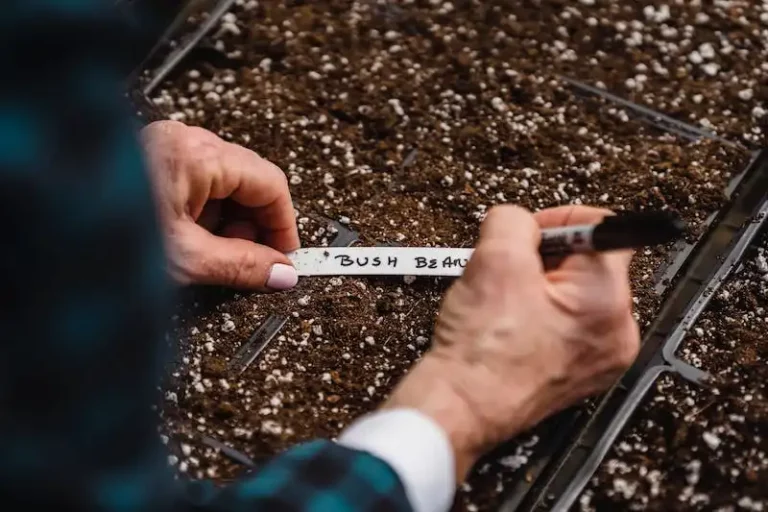Tulips are tend to be one of those flowers that many gardeners just can’t get enough of. Whether you’ve purchased them already forced in pots or planted them yourself in the garden, there’s just something about those vibrant blooms that you can’t resist. But what do you do with those tulips once they’ve finished blooming? Is it possible to save the bulbs that have been forced indoors?
If you want to pull off this amazing feat, it’s best to dig your tulips up once the leaves have started to wither and turn yellow. Store them in a cool, dark place like a crisper drawer in your fridge, in a paper bag, which will help to avoid rotting. Alternatively, you can leave them in the ground and oversummer them, but the general wisdom is that forced tulips are best treated as annuals and are not likely to rebloom the following year.
If you do decide to store your tulip bulbs, there are several steps you’ll need to follow. First, remove any excess soil and leaves that are still attached to the bulbs. Then, you can either dust them with fungicide or wrap them in sphagnum moss or wood chips to prevent them from drying out. In addition, it’s important to check on your bulbs every few weeks and discard any that show signs of rot or mold.
Storing Tulip Bulbs
When it comes to storing tulip bulbs, there are a few important factors to consider. After the tulips have finished blooming and the foliage starts to wither, it’s time to think about recharging the bulbs for next year’s blooms. Overwintering tulip bulbs is a matter of giving them the proper care and conditions to ensure their survival until the next growing season.
The first step in storing tulip bulbs is digging them up from the pots or garden beds where they have been planted. Carefully remove any excess soil that may be attached to the bulbs, being careful not to damage the roots. Then, separate the bulbs according to their varieties, as different tulip varieties may have different storage requirements.
One popular method of storing tulip bulbs is to pack them in a dry, well-ventilated place. Some gardeners choose to store the bulbs in brown paper bags or mesh bags, while others prefer to use breathable containers such as crates or boxes. Whichever method you choose, make sure the bulbs are stored in a cool, dry place with good air circulation.
In addition to the proper storage container, the bulbs may benefit from the addition of some moisture-retaining material, such as peat moss or wood chips. These materials can help maintain the bulbs’ moisture levels and prevent them from drying out during storage.
It is also important to note that tulip bulbs are susceptible to disease and pests, so it’s essential to inspect them before storing. Remove any bulbs that show signs of damage or disease to prevent the spread of infection to the rest of the stored bulbs.
If you have any questions about storing tulip bulbs, be sure to reach out to a local gardening expert or consult a reliable online article or post. They can provide specific advice and guidance based on your specific climate and gardening conditions.
In conclusion, storing tulip bulbs is a necessary step for gardeners who want to enjoy their tulips year-round. By properly storing the bulbs in a cool, dry place and taking precautions against disease and pests, you can ensure that your tulips will be ready to bloom again in the next growing season.
Interesting fact: Some gardeners use the term “overwintering” to describe the process of storing plants or bulbs during the winter months to protect them from freezing temperatures and ensure their survival for the next year’s growth.
Read more about tulip bulbs and gardening tips on Plantura, a popular website for plant enthusiasts and collectors.
When to Dig Up Tulip Bulbs
In addition to the basics of storing tulip bulbs, many gardeners become interested in overwintering tulip bulbs, especially if they have been forced to bloom indoors during the winter months. This step-by-step guide will show you how to properly dig up and store tulip bulbs to ensure they survive the winter and bloom again in the spring.
1. Determine the best time to dig up your tulip bulbs. The ideal time is after the leaves have turned yellow and wilted away. This is usually in late spring or early summer, depending on when your tulips finished flowering.
2. Prepare your tools. You will need a garden fork or spade, a mesh bag or box for storing the bulbs, and some additional material such as moss or peat moss.
3. Begin by digging around the tulip bulbs. Start digging about 6 inches away from the base of the plants to avoid damaging the bulbs. Dig deep enough to lift out the entire clump of bulbs, including the mother bulb and any attached corms.
4. Gently remove any soil or moss from the bulbs. If the bulbs are still flowering or have flower stalks attached, it’s best to remove them to promote better storage. Trim back the leaves to about 2 inches long.
5. Place the bulbs in your storage container. You can use a mesh bag or box with ventilation holes to allow air circulation. Add some additional material such as moss or peat moss to help keep the bulbs moist and prevent them from drying out.
6. Store the bulbs in a cool, dark place. Some gardeners prefer to store their tulip bulbs over the summer in a fridge, while others use a cool basement or garage. The temperature should be between 35-45 degrees Fahrenheit (2-7 degrees Celsius). Check on the bulbs every few weeks to ensure they are not rotting or drying out.
By following these steps, you can save tulip bulbs that have been forced indoors and enjoy beautiful spring-flowering tulips year-round. Just remember to dig them up at the right time and store them properly to ensure their survival.
How to Dig Up Tulip Bulbs
If you enjoy having tulips year-round, it’s important to know how to dig up the bulbs for replanting or storing. Follow this step-by-step guide to properly dig up your tulip bulbs:
- First, wait until the foliage of the plants has turned brown and died. This usually takes a few days after the plants have stopped blooming. It’s essential to keep the foliage intact, as it provides the energy for the bulbs to gather nutrients.
- Next, use a fork or shovel to carefully dig around the base of the plants, making sure not to damage the bulbs. Make the holes about 6 inches away from where the bulbs were originally planted.
- Gently lift the bulbs out of the ground using your hands or a garden fork. Be cautious not to remove any attached foliage or damage the bulbs.
- After the bulbs have been dug up, shake off any excess soil, but do not remove the dry outer layer of the bulbs (also known as the tunic). This layer protects the bulbs during storage and helps regulate their moisture levels.
- If you plan to immediately replant the bulbs, choose a sunny and well-drained location in your garden. In areas with harsh winters, it’s recommended to apply a layer of protective mulch or wood chips over the planted bulbs to provide insulation.
- If you prefer to store the bulbs, wrap them in dry peat moss or newspaper to protect them during their dormant period. Store the wrapped bulbs in a cool, dry place with good air circulation, such as a mesh bag or open cardboard box. It’s important to check them regularly and remove any bulbs showing signs of rot or disease.
- For long-term storage, store the wrapped bulbs in a refrigerator set to a temperature between 35-45°F (2-7°C). Make sure not to store them near fruits or vegetables, as they can release ethylene gas, which may damage the bulbs.
- When replanting the bulbs in the future, remove the old tunic from each bulb and inspect them for any signs of damage or disease. Healthy bulbs will have firm and plump scales.
- Prepare the planting area by loosening the soil with a garden fork or tiller. Mix in compost or well-rotted manure to improve the soil’s fertility.
- Plant the tulip bulbs at a depth that is three times their height, with the pointed end facing upwards. Space the bulbs a few inches apart to allow for proper growth and airflow.
- Cover the bulbs with soil, gently firming it around them. Water the newly planted bulbs thoroughly, and then add a layer of mulch to help conserve moisture and prevent weed growth.
- Continue to provide proper care for your tulips throughout the year, including regular watering, fertilizing, and deadheading. This will help ensure healthy growth and vibrant flowers.
By following these steps, you can dig up and store your tulip bulbs for replanting or overwintering. Don’t hesitate to reach out to other tulip collectors or gardening communities for additional tips and tricks on tulip bulb care.
Storing Tulip Bulbs
If you want to save tulip bulbs that have been forced indoors, you can do so by properly storing them. Tulip bulbs can be kept for oversummering and used again for the next growing season. Here are the basics of storing tulip bulbs:
- When the tulip foliage has died back naturally, it is safe to begin storing the bulbs.
- For overwintering, tulip bulbs should be lifted out of the ground.
- Remove any metal stakes or tags that have been used to support the plants.
- Gently clean off any excess soil from the bulbs, but be careful not to damage the outer corm.
- Inspect the bulbs for any signs of damage or disease. Discard any bulbs that appear unhealthy.
- For optimal storage, wrap the bulbs in dry moss or wood chips. This will help prevent them from drying out.
- Place the wrapped bulbs in a container, such as a paper bag or a cardboard box, and store them in a cool, dark place.
- The ideal temperature for storing tulip bulbs is around 45°F (7°C).
- If you have a refrigerator, you can use the crisper drawer to store the bulbs.
- Avoid storing tulip bulbs near fruits or vegetables, as the ethylene gas they produce can cause the bulbs to rot.
- Tulip bulbs can be stored for several months before planting them again.
By following these guidelines, you can save your tulip bulbs for oversummering and ensure healthy, beautiful flowers for the next growing season. If you have any more questions about storing tulip bulbs, feel free to ask!



